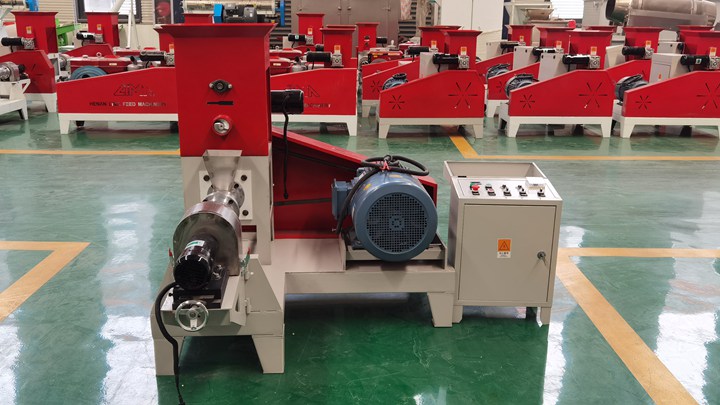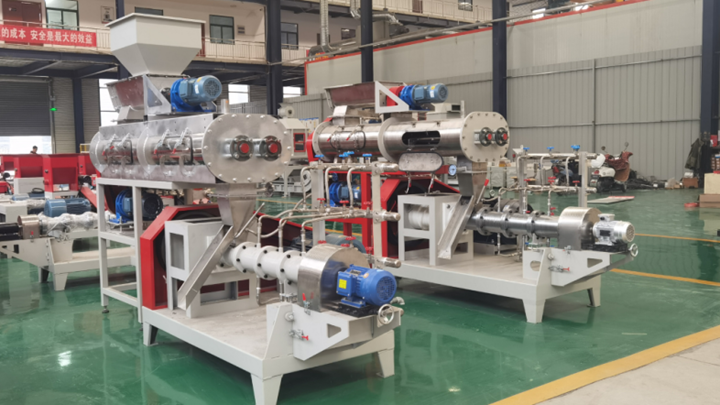.jpg)
Feeding them too often can put an excess amount of nutrients into your pond which can cause algae issues. With that being said, if you have clear water and would like to feed your fish twice a day you can. Feeding your fish twice a day will help to promote growth, and give you happy plump fish. By getting into a feeding pattern your fish will

Control Mode: Automatic/Manual. CAPACITY: 1-20T/H. APPLICATION: Aqua Feed Industry. PELLET SIZE: 1-6mm. WhatsApp: +86 138 3838 9622. Email: enquiry@pellet-richi.com. The fish farming industry is experiencing considerable growth in all regions of the world, creating an everincreasing demand for high-quality fish food pellets.

Algae can be both good and bad for your koi fish. These organisms can help keep the nitrate levels in check, preventing your fish from dying. Since koi fish are omnivorous, algae also serves as a source of nutrition. In addition, algae also helps to increase the oxygen levels in your pond through photosynthesis.

Control Mode: Automatic/Manual. CAPACITY: 1-20T/H. APPLICATION: Aqua Feed Industry. PELLET SIZE: 1-6mm. WhatsApp: +86 138 3838 9622. Email: enquiry@pellet-richi.com. The fish farming industry is experiencing considerable growth in all regions of the world, creating an everincreasing demand for high-quality fish food pellets.
Jun 03, 2021 · As winter nears and temperatures drop to less than 12˚C (54˚F), feed your koi no more than 1 – 2 times a week. Make sure the feeding sessions take place when the water is warmest, perhaps mid to late afternoon. At this point, your koi should only be consuming wheat-germ-based diets.
.jpg)
Floating Fish Feed Manufacturing Process. Selection of Raw Material. When selecting raw materials for fish feed processing, remember that the final product must be stable in water. The main nutrients are starch, with 10% to 15% of feed for sunken fish and over 20% of feed for floating fish. The starch content is generally between 5% and 60%.
.jpg)
Besides cabbage, koi are known to feed lettuce, kale, and many other types of greens. Peas. You can feed peas to your koi fish. They are not high in protein, but they are rich in vitamins and minerals. Dry pellet koi food can be low in vitamins and minerals, especially if they have been opened for a prolonged period of time.
.jpg)
Fish Feed Extruder Line Fish Feed Extruder Machines Floating Fish Feed Machinery Extruder Machine Production Line. Up to 5 years warranty. $15,000.00-$250,000.00/ Set. 1.0 Sets (Min. Order) 3 YRS CN.
.jpg)
How often the koi is fed and the quantity that is fed is very important to the health of your koi fish. In regards to the frequency of feeding koi, it is recommended to feed koi 2-4 times a day, what they can consume within 5 minutes. This feeding frequency can be adjusted based on factors such as the age of the koi fish and the water temperature.
.jpg)
2. Extruding chamber: it consists of a screw, a barrel, a template, a clamp and so on. The screw, and barrel are piecewise combined, so the degree of compression can be adjusted in accordance with the type and requirements of extruded feed, in order to change the expansion of the extruded feed. 3. The expansion mechanism is divided into 3
.jpg)
Floating fish feed extruder machine : Mixer system, Extruder system, Drying system, Flavoring system and Controlling system. Fish feed machine is fully continuous and automatic. The final shapes and sizes can be various by changing the Dies. Floating Fish Feed Extruder Machine FEATURE. 1. Our processing line adopt international advanced

Depending on the manufacturer, the protein content of the pellets varies greatly-usually between 25% and 36%. The main source of protein should be fish meal or soybean meal. The fat content in the pellets (from fish oil) should be at least 5%. Before feeding your koi carps, soak their food pellets in the pond for at least 30 seconds to 1 minute.

About products and suppliers: Give your farm or business a new productivity power with amazingly advanced koi feed extruder machine available onLima.com. The koi feed extruder machine come with enticing discounts and progressive inventions and technologies that incorporate all desired attributes.

This small fish feed pellet processing line produces feed pellets with a 40–300 kg/h capacity for aquaculture and pets such as catfish, tilapia, shrimp, cats, and dogs. Additionally, the grinder, mixer, extruder, and dryer in this basic floating fish feed manufacturing line are appropriate for agricultural or small-scale commercial use.

Feeders allow you to observe fish feeding every time, while creating a reliable fishing hole, making them an important complement to your private water or community coastline. Pellet fish feed is the most cost-effective method of fisheries management and can be used to raise fish. Given the efficient conversion rate, fish feed is a cheaper